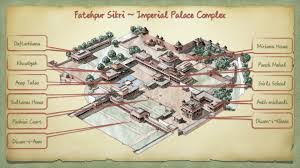Architecture is not limited to the brick and mortar buildings. It is also about the experience of a place. It creates a sense of space and time to create an overall experience for the visitors. Hence a number of tropes are used to elevate the human perception of a building. The architectural promenade is one such feature that uses the visitor’s point of view to play with the sense of space and time to create different architectural experiences.

The architectural promenade is a recurring element in modern architecture. It is also increasingly employed in the heritage buildings, museums and galleries to create a guided user experience. The term architectural promenade was coined by the Swiss French architect Le Corbusier. It uses the design principles of movement and flow that urges visitors to tour the building. The design creates an itinerary of the monument thus elevating the user experience to that of movement. The elements of the architectural promenade uses walkways, light and ventilation to create different points of view and helps the visitor experience all the aspects of the building.

The basic characteristics of the architectural promenade includes a sequence of events as a visitor walks through the building. Hence it often uses ramps instead of stairs to give an interrupted flow of movement. The guided sequence also develops a hierarchy of elements. The features that are intended to be highlighted are spotted using a play of light and shadows usually. The walkways encourage visitors to explore and move using long corridors, clear sight lines, natural light and ventilation. The design usually intends to guide the viewpoint of the visitor.

Time is also an inseparable element of the architectural promenade. The guided tour can be defined by the kind of experiences it evokes in terms of time: the absence and the presence. The absence can be defined as a space that creates a sense of memory and imagination. It reflects on what is not there, for example the open spaces. It uses the visitor’s imagination to fill out these gaps. The presence, on the contrary, creates an increased sensory and emotional experience so that the present seems more present. This is achieved using bold and strong visuals and textures.

The promenade in architecture is not new. It has been employed since ancient times. The Athenian Acropolis, the Taj Mahal, the palace city of Fatehpur Sikri, ancient Zen Buddhist temples and the Arabian kasbahs, all used the promenade as a technique to accentuate the sensory experience of a place. Because of the experiences it creates of sequential images the architectural promenade is often compared to a movie. It creates wonder, astonishment and sometimes nostalgia. Though it is often seen as having the viewer at the centre, invoking all the senses, some people might not appreciate it. In recent studies it was found that the user experience in the art and culture galleries was not always positive. People did not enjoy an itinerary of the experience. It may be because certain elements are best enjoyed by one’s own perception and perspectives. These viewpoints can be different for different people. Hence the architectural promenade is a beautiful concept but we need to analyse its reception in the context of time and space before using it. Every element needs to be weighed against the user experience before incorporating it in our designs.

References
- https://issuu.com/birkhauser.ch/docs/le-corbusier-architectural-promenade
- https://www.researchgate.net/publication/342657325_The_architectural_promenade_and_the_perception_of_time
- https://iopscience.iop.org/article/10.1088/1755-1315/1054/1/012029/meta
- https://lecorbusier-worldheritage.org/en/the-influence-of-the-architectural-work/india/#:~:text=The%20 Capitol%20 Complex%20 in%20 Chandigarh,new%20 types%20of%20public%20 building.
- https://worldarchitecturefestival.com/worldarchitecturefestival2024/en/node/newsarticle-preserving-modern-architectural-heritage-in-india:-le-corbusier-s-sanskar-kendra-museum-of-the-city-of-ahmedabad-1955?type=NewsArticle
- https://issuu.com/ayazk/docs/the_promenade_in_architecture
- https://civilengineerkey.com/architectural-promenades-through-the-villa-savoye/
- newsdesk.si.edu
- https://www.gov-online.go.jp/eng/publicity/book/hlj/html/202102/202102_13_en.html
- https://www.archdaily.com/791942/ad-classics-bharat-bhavan-charles-correa
- https://wildart.works/behindthelens/fatehpur-sikri
